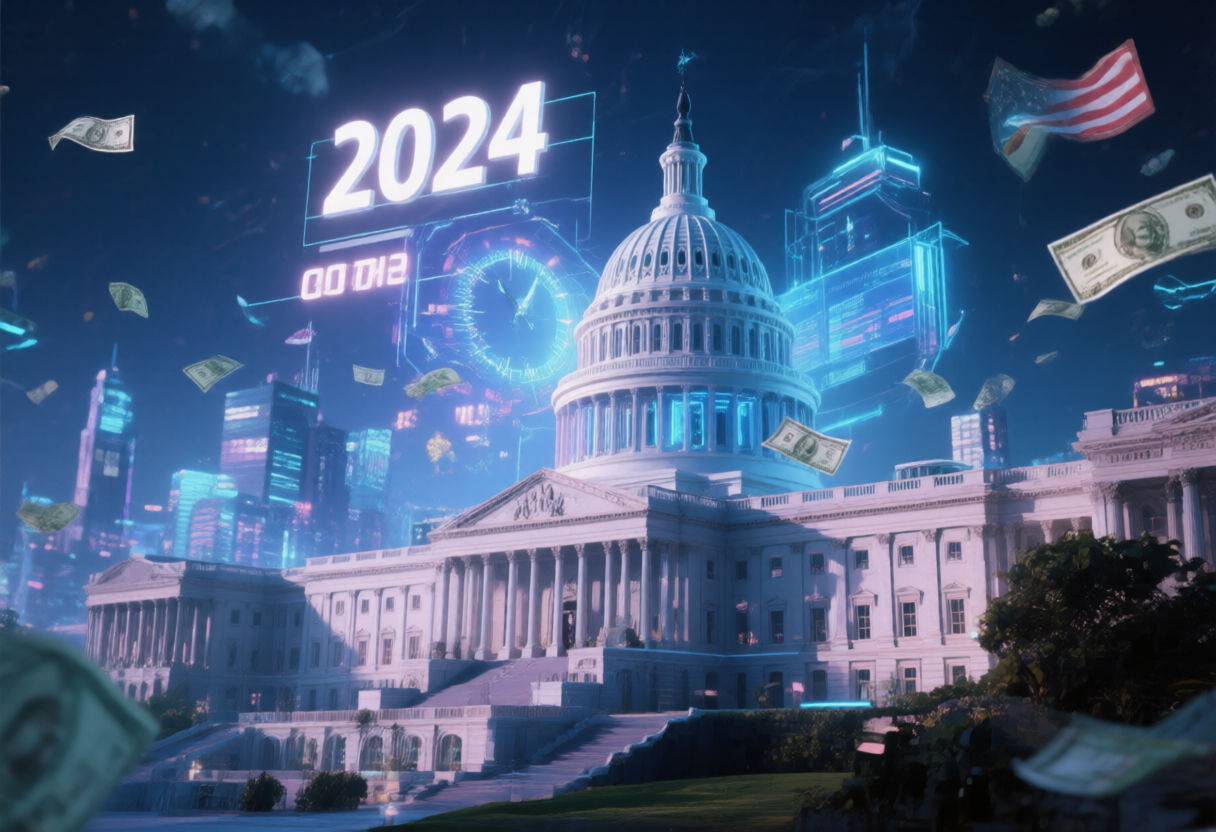
tl;dr
As U.S. Congress faces a critical deadline to finalize crypto legislation by early 2024, partisan gridlock and political priorities threaten to stall reforms. Key bills like FIT21 and the CLARITY Act remain stuck, while industry leaders warn of U.S. decline in financial innovation amid global compet...
**Urgency Mounts as Congress Faces Crypto Legislation Deadline Amid Political Gridlock**
As the U.S. Congress grapples with the complexities of regulating cryptocurrency, Republican Senator Thom Tillis of North Carolina has issued a stark warning: the window for passing comprehensive digital asset legislation is rapidly closing. With the 2026 midterm elections looming and partisan divisions intensifying, Tillis emphasized that delays could render critical reforms “dead on arrival” if action isn’t taken by early 2024.
The senator, a member of the Senate Banking Committee, highlighted the urgency during an interview with Bloomberg, stating that any crypto-related legislation must be finalized by January or February to avoid being sidelined by the political calendar. “If Congress is going to do anything with crypto, it has to be done by the first part of January, February, or you’re done,” he said. His remarks reflect growing concerns among lawmakers and industry stakeholders that election-year politics could overshadow policy progress.
### A Crucial Moment for the Crypto Industry
The U.S. crypto sector has long sought clear federal guidance, but regulatory clarity remains elusive. While bipartisan momentum has emerged around digital asset oversight, lawmakers remain divided on key issues, including market structure, stablecoin regulation, and the allocation of authority between the Securities and Exchange Commission (SEC) and the Commodity Futures Trading Commission (CFTC).
A pivotal bill, the **Financial Innovation and Technology for the 21st Century Act (FIT21)**, aims to resolve jurisdictional conflicts between regulators and provide clarity for exchanges and token issuers. However, the bill has yet to gain Senate approval, with delays attributed to the crowded legislative agenda and the looming 2026 elections. Meanwhile, the **CLARITY Act**, which seeks to define digital assets for regulatory purposes, has been stalled by the partial government shutdown that began in October, further complicating the path to reform.
### Partisan Gridlock and Leadership Challenges
The political landscape is further complicated by leadership decisions and procedural hurdles. House Speaker Mike Johnson has been accused of stalling floor sessions, while Senate committees face backlogs of bills and nominations. The **Responsible Financial Innovation Act**, a Senate-approved framework led by Republican Senator Cynthia Lummis, could still become law by 2026, but Tillis’s recent comments suggest a shift toward caution and delay.
The situation is exacerbated by the unpredictable nature of financial regulatory agencies, which are undergoing internal changes. At the same time, industry leaders warn that the U.S. risks falling behind global competitors like the European Union, which has implemented the **Markets in Crypto-Assets (MiCA)** regime.
### Industry Pressure and Global Competition
Crypto firms such as Coinbase and Ripple have ramped up lobbying efforts to secure a bipartisan agreement, arguing that regulatory ambiguity is driving innovation and investment overseas. “The U.S. is leading, but there’s a risk it could fall behind in financial technology,” said Kristin Smith, former CEO of the Blockchain Association, echoing concerns from industry advocates.
However, consumer protection groups and some Democratic lawmakers remain wary, citing the need for stricter safeguards following high-profile collapses like FTX and Celsius. This tension underscores the challenge of balancing innovation with stability.
### The Stakes for the U.S. Crypto Ecosystem
As the clock ticks, the stakes for the U.S. crypto industry are high. Without clear regulations, companies face uncertainty, investors remain cautious, and the nation’s competitive edge in financial technology is at risk. Tillis’s warning serves as a call to action, but with partisan divides and the 2026 election cycle looming, the path forward remains uncertain.
For now, the battle over crypto regulation is not just about policy—it’s about whether the U.S. can navigate political chaos to maintain its leadership in the digital asset frontier. As one industry leader put it, “The time to act is now, or the window will close for good.”